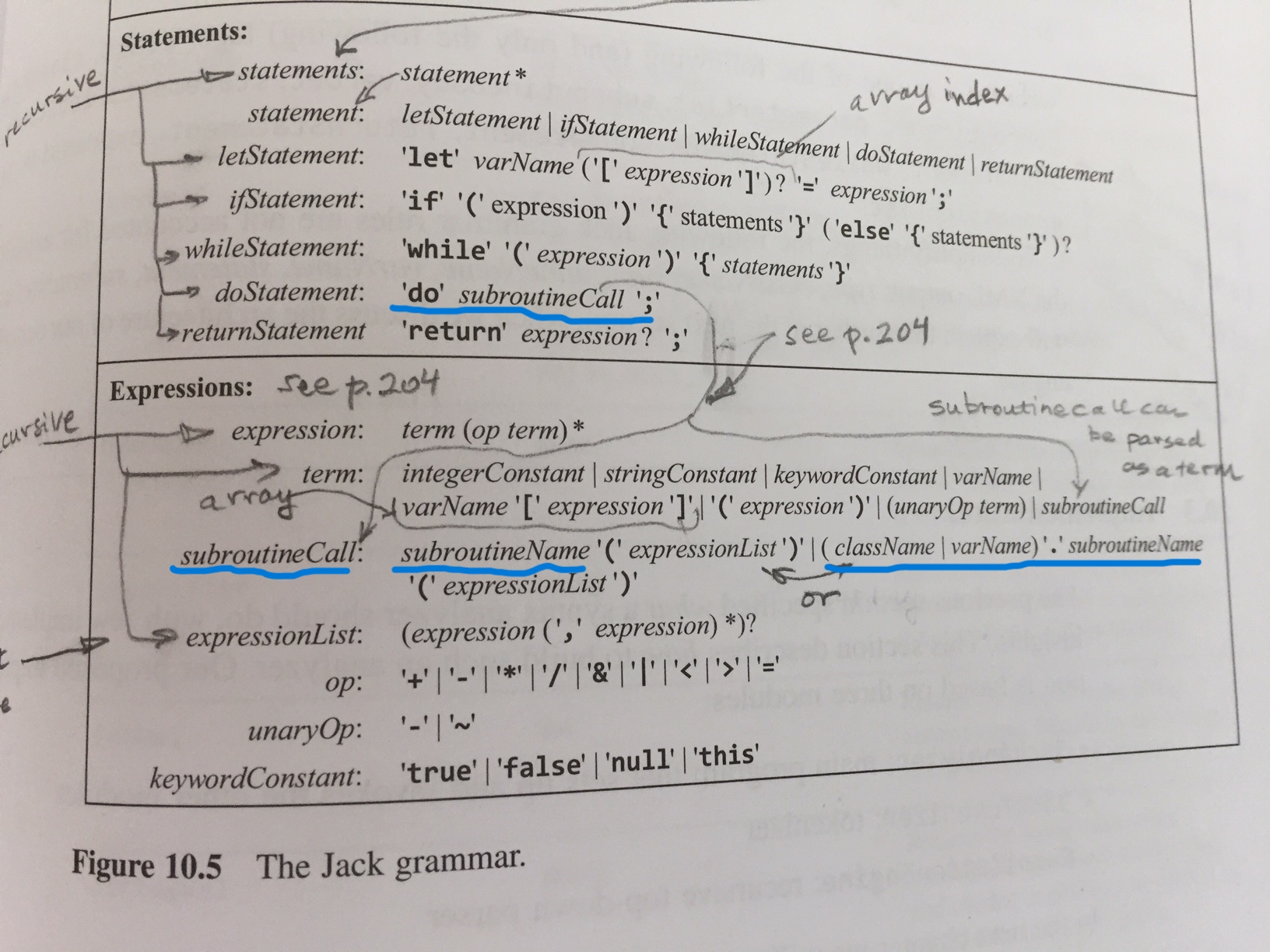Thanks for the quick response!
Attached is an annotated snapshot of the Jack grammar (edition 2, but that should not make a difference). Expressions are used by the do and let statements. In Expressions, the subroutineCall is defined as either subroutineName(expList) or className|varName.subroutineName(expList)
By my reading, the pre-pending of either className or varName to subroutineName is not required. So this leads me to the question of the identify of a subroutineName without a className or a varName -- is it a method or is it a function (with the method requiring a THIS argument)?
